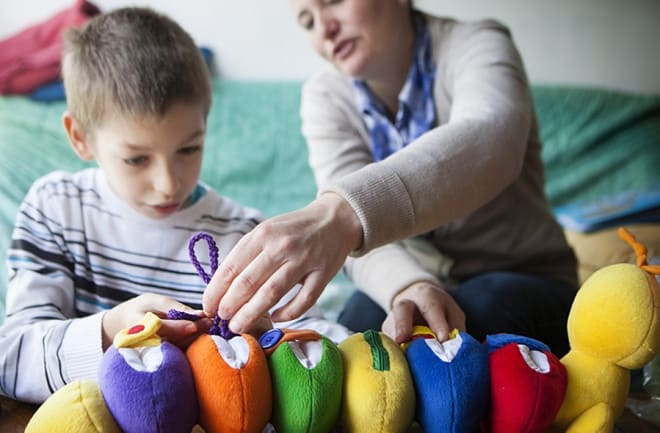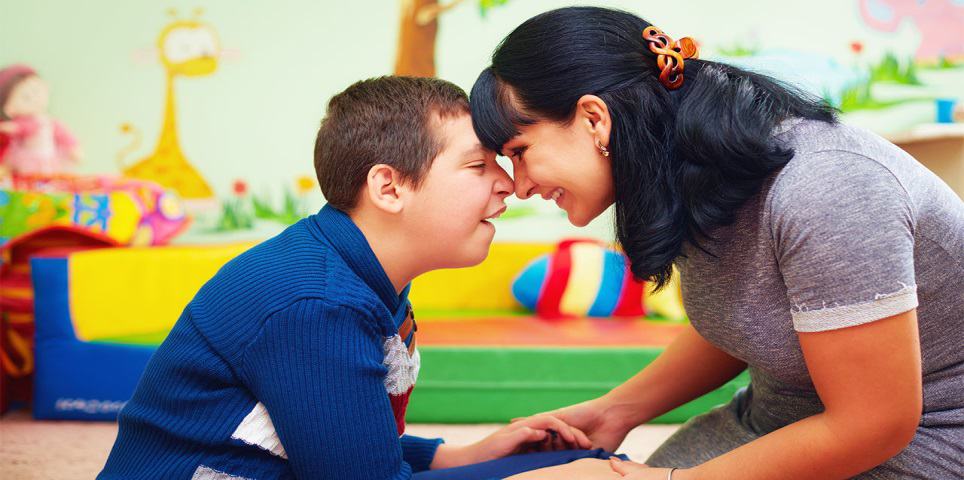As there is currently no known single cause of autism, early diagnosis helps a person receive the support and services that they need, which can lead to a quality life filled with opportunity.
The Wealth of a nation is not so much in its of economical and natural resources but it lies more decidedly in the kind and quality of the wealth of its children and youth. It is they who will be the creators and shapers of a nation’s tomorrow.
Nelson Mandela once said children’s are the greatest treasure they are our future.
The Children of today will be adults of tomorrow. Today’s leaders and activists. Their quality and personality will determine the kind of destiny that beackons the nation.
If any child close to you or the child of a close friend or relative — has just received a diagnosis of Autism, you are probably feeling baffled and overwhelmed. It is never easy to learn that someone you love has a serious health or developmental state. Learning and knowing about the disorder — and where to get help — will ease your fear and confusion. It can also provide the tools you need to find the support that children with autism — and you — really need.




Know more about Autism.
Autism spectrum disorder (ASD) is a complex developmental disability, impacts the nervous system and affects the overall cognative, emotional, social and physical health of an affected individual. Typically appearing during childhood and affecting a person’s ability to communicate and interact with others. The range and severity of symptoms can vary widely usually with obsessive interests and repetitive behaviors. Early recognition, as well as behavior, educational and family therapies may reduce symptoms and support development and learning to an extent.
- Prevalence is 2-6/1000 individuals.
- 4 times more prevalent in boys than in girls.
- No know racial, ethnic, or social boundaries.
- No relation to family income, lifestyle
- Autism impacts normal development of the brain in areas of social interaction and communication skills.
- Difficult to communicate with others are relate to the outside world.
- Occasionally, aggressive and/or self-injurious behavior may be present.
- May exhibit repeated body movements( hand flapping, rocking)
- Unusual responses to people.
- Attachment to objects
- Resistance to change in routine
- Sensory sensitivities.
Autism in the Early 20th Century: The first appearance of autism in historical literature was in 1911 by Eugen Bleuler, a psychiatrist from Switzerland, who used the term to describe a unique cluster of symptoms that were traditionally thought to simply be symptoms of schizophrenia. Coming from the Greek word autos, autism was originally used to describe extreme social withdrawal that was common with psychiatric diseases that presented with psychosis. Although it is now known that autism and schizophrenia are two unrelated disorders, autism was not classified as its own disorder in any diagnostic manual until 1980.
Characteristics & Diagnosis
Autism is characterized in the diagnostic and strategically manual DSM-V by:
- Persistent differences in communication, interpersonal relationships, and social interaction across different environments
What this can look like: Being nonverbal or having atypical speech patterns, having trouble understanding nonverbal communication, difficulty making and keeping friends, difficulty maintaining typical back-and-forth conversational style
- Restricted and repetitive behavior, patterns, activities and interests
What this can look like: Repeating sounds or phrases (echolalia), repetitive movements, preference for sameness and difficulty with transition or routine, rigid or highly restricted and intense interests, extreme sensitivity to or significantly lower sensitivity to various sensory stimuli
According to the American Psychiatric Association’s Diagnostic and Statistical Manual, which is used by clinicians to diagnose autism, these core features of autism must be present in early childhood but may not fully manifest until social demands exceed the person’s capacity to cope with them, and challenges may be masked by learned coping strategies.
Prevalence
In 2018, the Centers for Disease Control and Prevention (CDC) issued its Autism and Developmental Disabilities Monitoring (ADDM) report. The report concluded that the prevalence of autism had risen to 1 in every 59 – twice as great as the 2004 rate of 1 in 125. The spotlight shining on autism, as a result, has opened opportunities for the nation to consider how to serve people on the autism spectrum and their families.
Although autism impacts people regardless of race or ethnic.
Currently, boys are also approximately 4.5 times more likely to have an autism diagnosis than girls of the same age. However, recent research suggests that girls may not show autism in the same way as boys and might go undiagnosed because of that.
Early Signs
Autism impacts an individual throughout the lifespan. However, research shows that early diagnosis can lead to improved quality of life.
- Speaks later than typical or not at all (nonverbal)
- Repetition in language or movement, such as repeating the same word or sounds, hand flapping, or any repeated movement
- Atypical nonverbal communication, including avoiding eye contact, giving few facial expressions, or having a monotone
- Prefers solitary or parallel play rather than engaging in associative or cooperative play with other children
- Extremely distressed by changes, including new foods or changes in schedule
- Preference for predictable, structured play over spontaneous or make-believe play
- Strong, persistent interest on specific topic, part of a toy, or item
In our culture, autism spectrum disorder is often thought as a childhood condition, with public attention focused primarily on children and the importance of early detection and intervention. However, autism is a lifelong condition, necessary supports and treatments change, as people on the spectrum move through major life phases. With the rising diagnostic rate at 1 in 59, we must accommodate the pressing need for supports and programs for people on the spectrum across the lifespan.
Like everyone else, people with autism move through significant life changes. Their quality of life depends not only on the foundation provided in childhood, but also on ongoing supports that are specific to their educational, medical, social, recreational, family and employment needs.
There Autism Societies across globe supports people with autism and their families through three critical stages of life.
Early Detection and Intervention
Early identification and access to effective treatments before age 3 is always needed. Autism behaviors can become apparent as early as 18 months, and parents should investigate as soon as they suspect autism or another developmental issue. Early diagnosis of autism can reduce lifetime care costs by two-thirds, as it allows parents, therapists and others to begin treatments sooner. Learning as much as possible about autism and its community is important at this stage.
Building a Strong Foundation from Childhood through Adolescence
The Autism Societies help parents and caregivers build treatment and educational programs so that all children and adolescents can reach their fullest potential. At this stage, it is important to understand how the school system can help (for example, through an Individualized Education Plan) and how to prepare for the transition to adult life.
A Life of Happiness and Dignity
Usually Autism Society works to ensure that every adult with autism has access to services and supports that maximize independence and secure the highest quality of life. For many, employment and living in the community are goals to pursue during adulthood. Self-advocacy is also important to many people on the spectrum, as more people with autism are speaking out about their experiences, identities and needs.
The behaviors of autism spectrum disorder may be apparent in infancy, but they usually become clearer during early childhood. As part of a well-baby or well-child visit, your child’s doctor should perform a “developmental screening” and encourage you to ask specific questions about your child’s development progress.
The National Institute of Child Health and Human Development (NICHD) developed a detailed list of behaviors, listed in four categories (shown below). Additionally, the Center for Disease Control and Prevention (CDC) also has a developed a list of Signs and Symptoms, which can be found here.
Communication, social behavior, stereotyped behavior other behavior
The disorder’s symptoms vary so widely, therefore these symptoms do not mean your child has autism. However, if your child is showing these behaviors we encourage you to have him/her evaluated by a multidisciplinary team. This team might include: a neurologist, psychologist, developmental pediatrician, speech/language therapist, learning consultant, and/or other professionals who are knowledgeable about autism.
What is Autism Spectrum Disorder?
Autism spectrum disorder (ASD) is a developmental disability that can cause significant social, communication and behavioral challenges. There is often nothing about how people with ASD look that sets them apart from other people, but people with ASD may communicate, interact, behave, and learn in ways that are different from most other people. The learning, thinking, and problem-solving abilities of people with ASD can range from gifted to severely challenge. Some people with ASD need a lot of help in their daily lives; others need less.
A diagnosis of ASD now includes several conditions that used to be diagnosed separately: autistic disorder, pervasive developmental disorder not otherwise specified (PDD-NOS), and Asperger syndrome. These conditions are now all called autism spectrum disorder.
Signs and Symptoms
People with ASD often have problems with social, emotional, and communication skills. They might repeat certain behaviors and might not want change in their daily activities. Many people with ASD also have different ways of learning, paying attention, or reacting to things. Signs of ASD begin during early childhood and typically last throughout a person’s life.
Children or adults with ASD might:
- not point at objects to show interest (for example, not point at an airplane flying over)
- not look at objects when another person points at them
- have trouble relating to others or not have an interest in other people at all
- avoid eye contact and want to be alone
- have trouble understanding other people’s feelings or talking about their own feelings
- prefer not to be held or cuddled, or might cuddle only when they want to
- appear to be unaware when people talk to them, but respond to other sounds
- be very interested in people, but not know how to talk, play, or relate to them
- repeat or echo words or phrases said to them, or repeat words or phrases in place of normal language
- have trouble expressing their needs using typical words or motions
- not play “pretend” games (for example, not pretend to “feed” a doll)
- repeat actions over and over again
- have trouble adapting when a routine changes
- have unusual reactions to the way things smell, taste, look, feel, or sound
- lose skills they once had (for example, stop saying words they were using)
Diagnosing ASD can be difficult since there is no medical test, like a blood test, to diagnose the disorders. Doctors look at the child’s behavior and development to make a diagnosis.
ASD can sometimes be detected at 18 months or younger. By age 2, a diagnosis by an experienced professional can be considered very reliable. However, many children do not receive a final diagnosis until much older. This delay means that children with ASD might not get the early help they need.
Treatment
There is currently no cure for ASD. However, research shows that early intervention treatment services can improve a child’s development Early intervention services help children from birth to 3 years old (36 months) learn important skills. Services can include therapy to help the child talk, walk, and interact with others. Therefore, it is important to talk to your child’s doctor as soon as possible if you think your child has ASD or other developmental problem.
Even if your child has not been diagnosed with an ASD, he or she may be eligible for early intervention treatment services. The Individuals with Disabilities Education Act (IDEA) external icon says that children under the age of 3 years (36 months) who are at risk of having developmental delays may be eligible for services. These services are provided through an early intervention system. Through this system, you can ask for an evaluation.
In addition, treatment for particular symptoms, such as speech therapy for language delays, often does not need to wait for a formal ASD diagnosis.
Unani medicine provides a wider platform for the management of ASD with its above features.
SIASAT FOUNDATION IN ASSOCIATION WITH DR WAHEED’S FOUNDATION, A UNIT OF UNANI MEDICINE, OPEN FOR NEW AVENUES
Dr M. A.Waheed can be contacted at cellphone number 9346287487 or email maw023@yahoo.com

